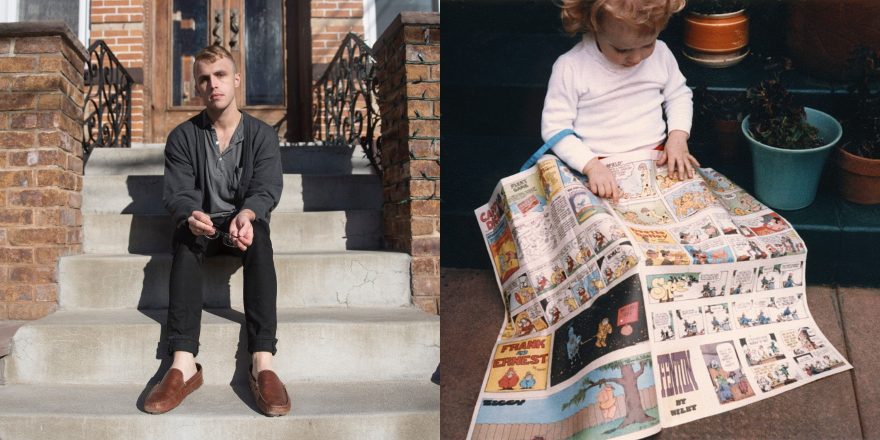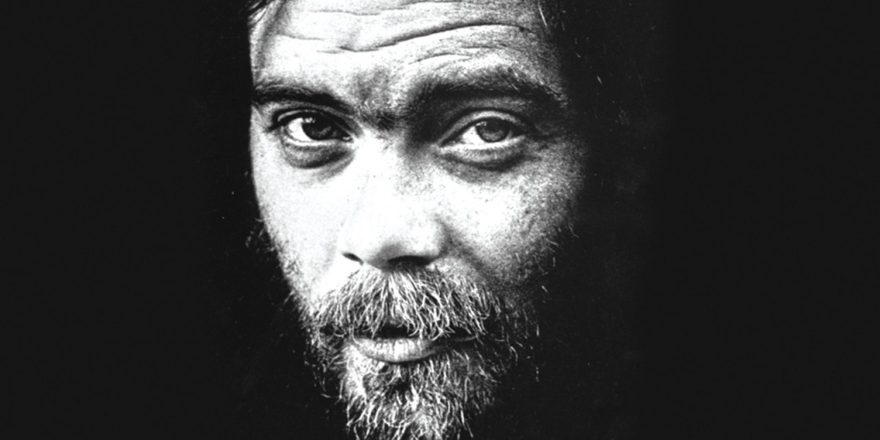My wife and I are making dinner in our new house to the dulcet strains of Paul McCartney’s “Biker Like an Icon,” from his endlessly forgettable 1992 turkey Off The Ground. The melody is ho-hum. The aquamarine-era production makes me seasick. I’m not dicing vegetables to this to be ironic; I’m listening because my father, Scott Enos, died two years ago, and I miss him.
My dad didn’t especially love this song — a cheesy track about a girl following a biker across America — it had no significance to our relationship. Still, it was always on in my family home. My dad, a huge Beatles fan who let nothing go to waste, would buy all the subpar solo albums on offer, rip the CDs and tack the songs on a variety of playlists. He played them on loop, and eventually those not-so-good songs became the soundtrack of our relationship.
Most music fans with boomer parents bond with them over the classics — the sterling, agreed-upon gems by the Who, Neil Young, and Jethro Tull. I was raised on all of those classics, but I wasn’t merely reared on Who’s Next, After the Gold Rush, and Aqualung; I heard just as much of their middling counterparts, like Endless Wire, Are You Passionate?, and J-Tull Dot Com.
There’s a reason for this. My dad came from a far different era of music consumption, where you wore out the grooves of a half-baked record because you felt like you owed it to the artist. They were like old friends that you stuck with through thick or thin, not floating online avatars you could mute on a whim. No skipping, no scrolling, no algorithm-fueled hummingbird brain. You buy Jackson Browne’s Time the Conqueror because he made The Pretender. Full stop.
This led to some hysterical tantrums over the years. When it came to McCartney’s erratic track record as a solo artist, every burn was as fresh as the last; my dad threw Macca’s pretentious art experiment with Super Furry Animals and Youth, Liverpool Sound Collage, out of a car window on the highway. As one of Jehovah’s Witnesses who was bullishly devout about man’s place in the universe, Neil Young’s sanctimonious, interfaith Prairie Wind song “When God Made Me” made steam come out of his ears.
I love the cognitive dissonance that bad classic rock creates. When I hear Jack Bruce’s eminently bland solo album Shadows in the Air — which my dad definitely bought — it briefly opens a wormhole into an alternate universe where Cream never existed. Goodbye, bass godhead of the 1960s, hello, some guy with a home studio. If Disraeli Gears got the ball rolling for you as a fan, should the buyer’s remorse of Shadows in the Air be enough to make you cancel your subscription? I tantalizingly wonder if — when it comes to classic rockers’ body of work — a chain is only as good as its weakest link.
These lukewarm albums tune me up as a fan and as a classic rock journalist; they continue to teach me that legends are human. Played on repeat in a blur of tacky programming and gated drums and mushy melodies, Shadows in the Air and the like were the ambience of my youth; today, they’ve burrowed out a little hideaway deep inside of me. And when I string these weird, lumpy deep cuts together in a way that Spotify or rock radio never will, they tell the story of my life.
I still love to spelunk in the hidden corners of the rock canon. I’ll put on Led Zeppelin’s Presence over Houses of the Holy any day of the week. When I’m burned out on the Rolling Stones’ Exile on Main St., the transitional Black and Blue will do in a pinch. But at its core, it’s an emotional thing; when things feel uncertain, sometimes I need the Crosby, Stills and Nash album with lunar hot dogs on the cover.
In fact, I have a playlist that I turn to, titled “SME’s Greatest Misses” after my dad’s initials. It anchors me when I feel sad or unmoored. It begins with Jethro Tull’s “Sparrow on the Schoolyard Wall,” from their forgotten late-period album Catfish Rising, and ends with “Crosby, Stills, Nash and Young’s “This Old House” from their lukewarm reunion album American Dream.
Few fans of either artist would reach for either of these songs; they’re bunts rather than grand slams, entombed in a Wikipedia subsection and rarely played. But because I only heard them in the context of my dad, they’re like unexpected sense smells that hit my brain like a ton of bricks. These artists belong to the world, but sometimes, in stolen moments, their mediocrities and misses belong to me.







